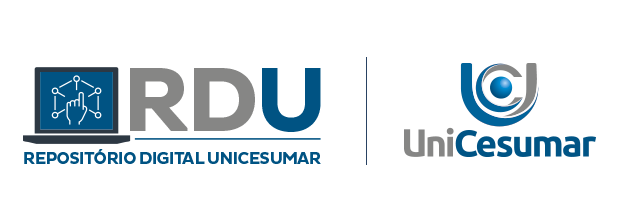Use este identificador para citar ou linkar para este item:
http://rdu.unicesumar.edu.br/handle/123456789/11028| Tipo: | Artigo |
| Título: | Composição fenólica e potencial antioxidante da casca da cebola roxa |
| Autor(es): | Reginato, Gabriel De Souza |
| Primeiro Orientador: | Ferrari, Ariana |
| Resumo: | A escassez de recursos naturais cresce à medida que as sociedades se desenvolvem. Assim, a sustentabilidade emerge como uma solução e, neste meio, o descarte de materiais orgânicos reaproveitáveis, especialmente vegetais, é um ponto importante a ser discutido e analisado, uma vez que o descarte de lixo se apresenta como um grande entrave para o desenvolvimento das práticas sustentáveis. Dentre os vegetais promissores, destaca-se a cebola, especialmente a cebola roxa, cuja casca usualmente descartada apresenta compostos bioativos, como os polifenólicos resveratrol e quercetina. Tais compostos atuam como antioxidantes e anti inflamatórios, reduzindo danos no organismo humano, como a aterosclerose e a inflamação crônica. Assim, este trabalho visou quantificar o resveratrol e a quercetina da casca da cebola roxa e determinar a atividade antioxidante do extrato. O teor fenólico total foi determinado pelo método de Folin-Ciocalteu e os flavonoides totais foram quantificados por método colorimétrico com cloreto de alumínio. A quantidade de resveratrol e quercetina no extrato da casca da cebola roxa foi determinada por cromatografia a gás acoplada a espectrometria de massas (GC_MS), já a atividade antioxidante foi avaliada através dos métodos de sequestro de radical livre (DPPH e ABTS) e poder de redução do ferro (FRAP). O extrato da casca da cebola roxa apresentou elevado teor de compostos fenólicos totais (204,49 mg EAG/g), flavonoides totais (86,04 mg EAG/g), resveratrol (451,8 μg/mL) e quercetina (324,36 μg/mL). Os valores de capacidade antioxidante em FRAP, ABTS e DPPH foram de 1194,15 (± 107,47), 148,44 (± 18,71) e 1103,77 (± 18,87), respectivamente. Esses resultados mostram que a casca da cebola roxa é rica em polifenóis, podendo ser aproveitadas pela indústria alimentícia e farmacêutica como ingrediente bioativo, contribuindo dessa forma para a sustentabilidade |
| Abstract: | The scarcity of natural resources grows as societies develop. Thus, sustainability emerges as a solution and, in this environment, the disposal of reusable organic materials, especially vegetables, is an important point to be discussed and analyzed, since the disposal of waste presents itself as a major obstacle to the development of sustainable practices. Among the promising vegetables, onion stands out, especially red onion, whose skin is usually discarded and has bioactive compounds, such as the polyphenolic resveratrol and quercetin. Such compounds act as antioxidants and anti-inflammatory, reducing damage in the human body, such as atherosclerosis and chronic inflammation. Thus, this work aimed to quantify resveratrol and quercetin in red onion skin and to determine the antioxidante activity of the extract. The total phenolic content was determined by the Folin-Ciocalteu method and the total flavonoids were quantified by the colorimetric method with aluminum chloride. The amount of resveratrol and quercetin in the red onion skin extract was determined by gas chromatography coupled to mass spectrometry (GC_MS), and the antioxidant activity was evaluated by free radical scavenging methods (DPPH and ABTS) and power of iron reduction (FRAP). The red onion peel extract showed a high content of total phenolic compounds (204.49 mg EAG/g), total flavonoids (86.04 mg EAG/g), resveratrol (451.8 μg/mL) and quercetin (324, 36 μg/ml). The antioxidant capacity values in FRAP, ABTS and DPPH were 1194.15 (± 107.47), 148.44 (± 18.71) and 1103.77 (± 18.87), respectively. These results show that the red onion skin is rich in polyphenols, which can be used by the food and pharmaceutical industry as a bioactive ingredient, thus contributing to sustainability. |
| Palavras-chave: | resíduos alimentares Allium ceppa polifenóis |
| CNPq: | CNPQ::CIENCIAS DA SAUDE::MEDICINA |
| Idioma: | por |
| País: | Brasil |
| Editor: | UNIVERSIDADE CESUMAR |
| Sigla da Instituição: | UNICESUMAR |
| Citação: | Reginato, Gabriel De Souza. Composição fenólica e potencial antioxidante da casca da cebola roxa. 28f. 2025. Unicesumar - Universidade Cesumar: Maringá, 2025. |
| Tipo de Acesso: | Acesso Aberto |
| URI: | http://rdu.unicesumar.edu.br/handle/123456789/11028 |
| Data do documento: | 20-Jan-2025 |
| Aparece nas coleções: | MEDICINA |
Arquivos associados a este item:
| Arquivo | Descrição | Tamanho | Formato | |
|---|---|---|---|---|
| Reginato, Gabriel de Souza.pdf | Artigo apresentado ao Curso de Graduação em Medicina da Universidade Cesumar – UNICESUMAR. | 899.93 kB | Adobe PDF |  Visualizar/Abrir |
Os itens no repositório estão protegidos por copyright, com todos os direitos reservados, salvo quando é indicado o contrário.
